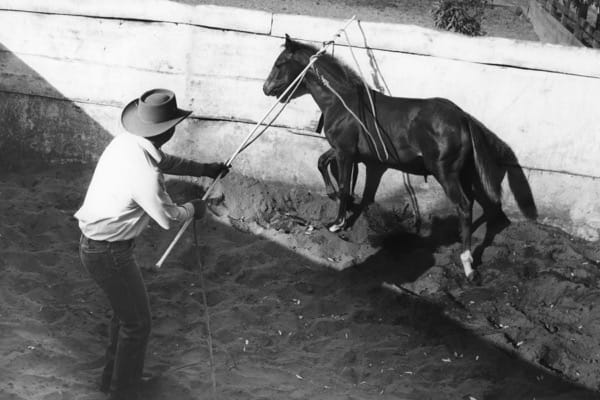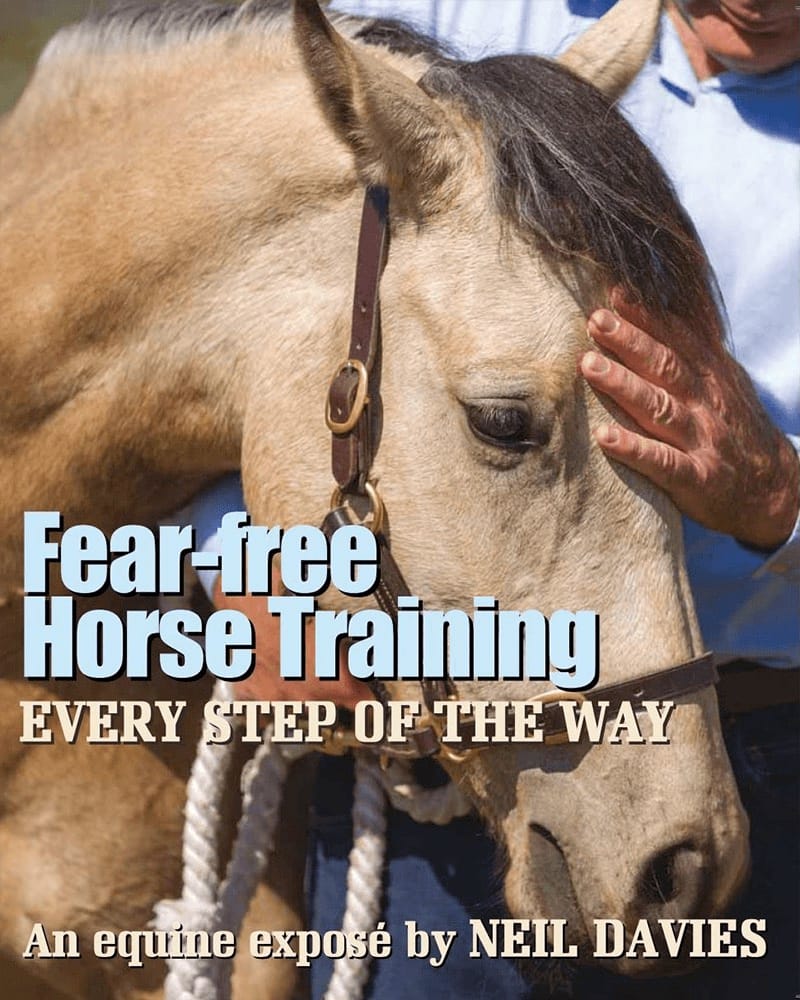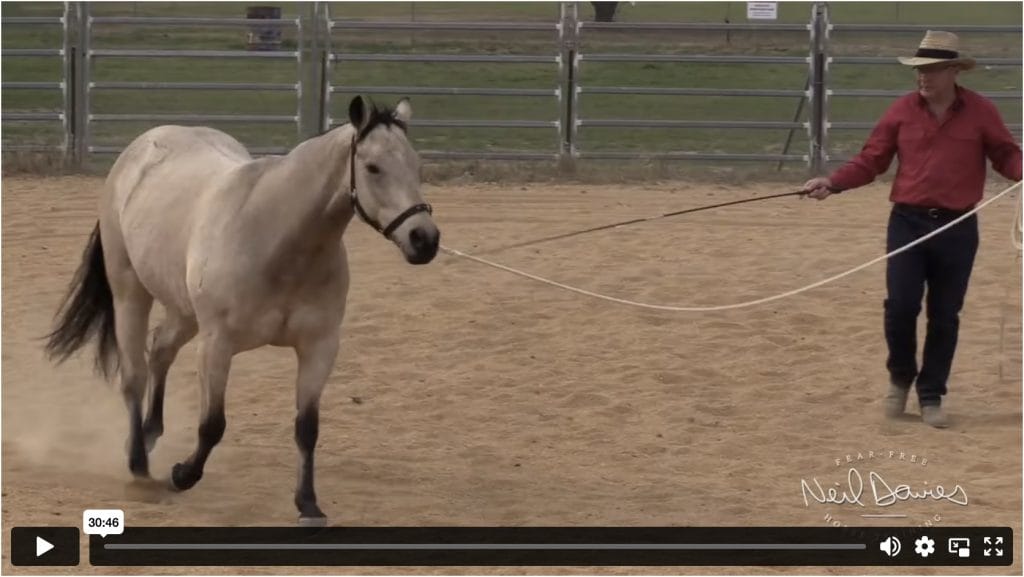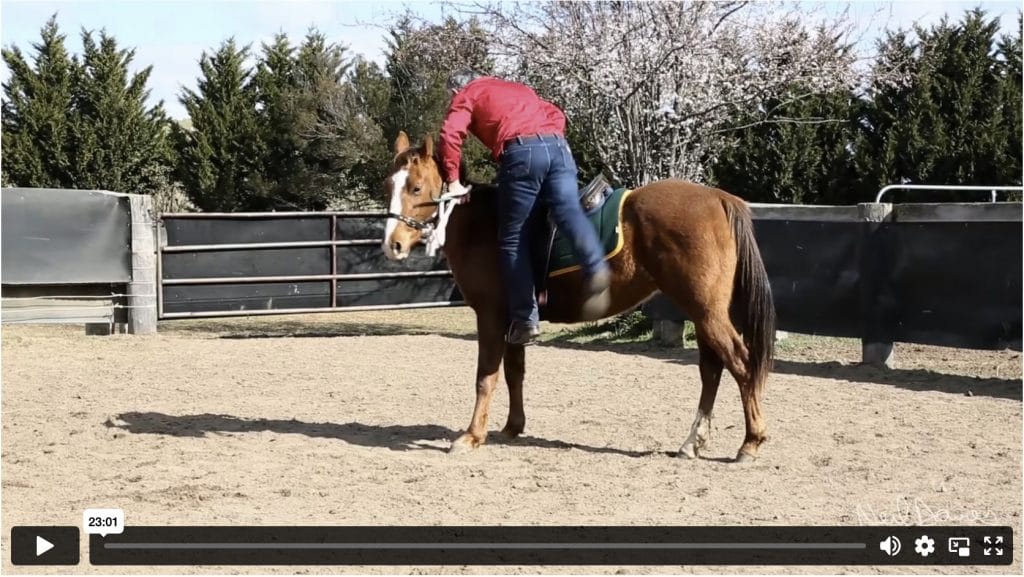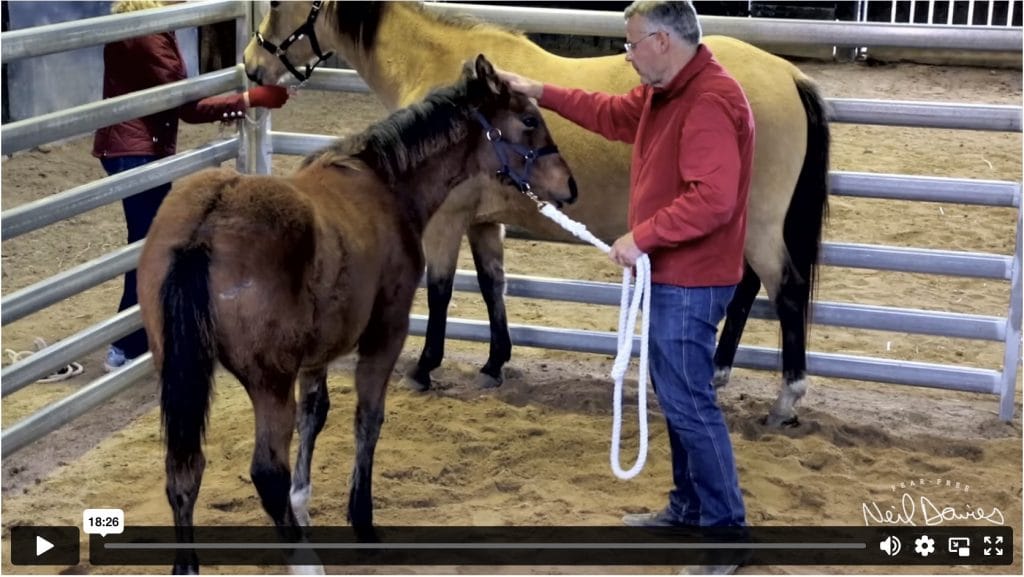If you want to handle horses, you must have good facilities. Horses can always find 100 different ways to injure themselves.
If your fences and yards aren’t up to scratch, you can bet your horse will find a way to cut himself or become tangled in something.
I’ve seen horse studs spend millions of dollars on new stables and yards that weren’t the least bit safe for horses.
Large brick stables with concrete floors may look pleasing, but a horse only has to kick a brick wall to injure his leg or hock.
Straw bedding on a concrete floor becomes very slippery and many horses slip and fall.
Also, if there’s not enough bedding, horses develop sores on their hocks from lying on concrete.
Steel doors and door jambs with sharp edges are another common danger around many stables.
Steel feeders and water troughs attached to walls are more things for horses to injure themselves on.
I’ve seen beautiful horse yards with the rails too close together.
The danger is when a horse turns his head sideways to pick grass through the rails, then pulls back and gets his head stuck.
The same thing happens if there’s a gap between two posts or a post and a gate.
Horses put their neck down the gap and are injured when they pull back in panic.
I’ve seen horses injured in all sorts of circumstances.
About thirty years ago, my brother Jim and I were working at William Inglis and Sons thoroughbred yearling sales in Sydney.
We were going about our business when we heard the dreadful sound of a horse squealing in pain.
Jim and I rushed out to the roadside to find a yearling filly stuck in a two horse trailer.
The filly had put her head down under the chest-bar and tried to rush out through the front window of the trailer.
She stood up when the chest-bar was just past her withers. We arrived to find the filly stuck fast and squealing and fighting in pain.
The chest-bar was bent in a u-shape over her back and her back was bent in u-shape under the chest-bar. It wasn’t a pretty sight.
There were about twenty people standing around with their mouths agape.
They didn’t know what to do.
Jim grabbed the filly’s tail and I grabbed her back leg.
Together we pulled her to the floor of the trailer and dragged her out.
Someone had just paid $50,000 for her and I don’t know if she ever made it to the racetrack.
When I was training horses full-time, all of my handling yards were over six foot high and all were lined with rubber and had deep sand on the ground.
My stables were large and sunny and well ventilated, with deep woodchips for bedding and plastic feeders and water buckets.
Every stable was lined with rubber, there were no sharp edges and I thought my stables were as safe as safe could be.
That was until I came out one morning to find a thoroughbred yearling stuck under the bottom rail of her stable yard.
The rail was only about eighteen inches off the ground and the filly had rolled underneath the rail and was stuck at her flank.
It’s not a good feeling to see a $300,000 racehorse stuck in this manner.
It’s even worse when you’re the one responsible for looking after her.
I had to cut the rail to release the filly. Luckily she was none the worse for her experience.
After this incident, I extended the rubber lining all the way to the ground in each yard.
People often say ‘But I don’t have a yard. Can’t I use some steel droppers and tape or wire to make a yard?’
I always reply ‘If you do, I guarantee you’ll end up with a disaster.’
As a horse owner, try to think of all the different ways that a horse might injure himself around your property and make sure that you eliminate all the problems.
You must have safe and proper facilities when you handle horses.
Near enough is never good enough.
When a horse is injured because of bad facilities, it’s no accident.

